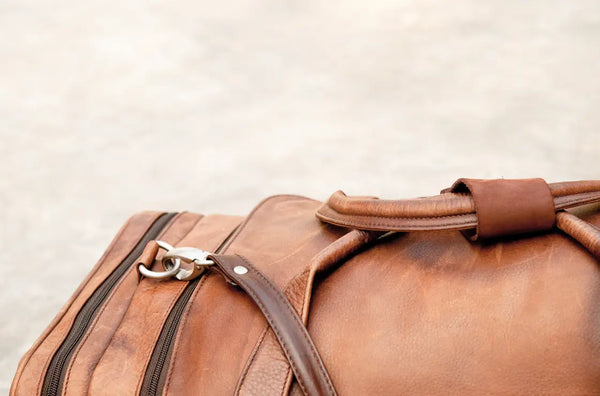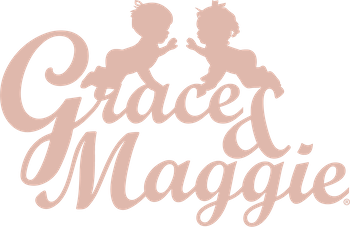
What to Take to Hospital When Having a Baby: The Australian Checklist
Help! What do I need to pack in my hospital bag for me and bubs? We have the ultimate checklist. Download our checklist guide.
Preparing for the arrival of a baby is an exciting and crucial part of the journey into parenthood.
While it's impossible to predict exactly when your little one will make their grand entrance into the world, being well-prepared is essential for a smooth transition into parenthood.
Pregnancy lasts around 40 weeks on average, but most babies arrive between 36 and 42 weeks of gestation. This means that your baby's arrival can be somewhat unpredictable.
It's wise to start preparing well in advance, typically between 30 to 36 weeks into your pregnancy. This gives you ample time to gather everything you need without feeling rushed
Understanding the typical length of a hospital stay is important. For a vaginal birth, most public hospitals allow a stay of about two days. However, the actual duration can vary based on individual circumstances and how well both you and the baby are doing. In the case of a caesarean section, the hospital stay is typically extended to around three days.
Keep in mind that there are a lot of variables so try to be open to adjustments in your birth plan and your hospital stay duration based on your healthcare provider's recommendations and the baby's needs. Having a support system in place is vital during this time.
Ensure your partner or a trusted friend or family member knows the details of your hospital bag and can assist you in case of an unexpected early arrival
The Hospital Bag:
Packing a hospital bag is a crucial part of your pre-baby checklist.
Your bag should contain items that will make your hospital stay as comfortable and stress-free as possible.
This list is a guide containing everything you need to consider when packing your bag.
You can use this as inspiration and decide what you think is essential for your hospital stay.
For Mum
Paperwork

Pack any relevant antenatal paperwork given to you at appointments with your GP, Obstetrician or midwife.
Medicare information, private health documents if planning to birth in a private hospital, and your birth plan.
Slip on shoes

Hospital floors are cold and slippery so you need to bring shoes that are easy to slip on when you get out of bed to attend to the baby or walk to the toilet.
Slippers, sandals or thongs are great options and also work well for people that need to have a caesarean section as they won’t be able to bend over after surgery to do up their shoes.
Snacks

Make sure you pack enough snacks for labour as well as postnatally as you will be up at all hours with the baby and get peckish overnight.
Note: sometimes you cannot eat whilst in labour, just in case it turns into a c-section and you need an anesthetic.
Remember that if you plan to breastfeed, you will be hungry as you need extra calories to produce milk.
Some snack examples are; protein balls, muesli bars, lollies, dried fruit, nuts, chips, juice and crackers.
Water Bottle

The hospital will obviously supply water in a jug and cup, sometimes even straws though most people bring a water bottle with a straw for convenience.
In labour, with an epidural or post a C-section, sitting up to drink can be challenging so having a bottle makes life easier.
If you like either iced or hot water then you can go a step further and bring an insulated drink bottle as then you don't need to wait for your partner, support person, or the midwives to bring ice or hot water for you.
Chargers

Any device you bring will need a charger to come along.
Phones, iPads, Laptops, Speakers, Headphones ect.
The likelihood of you being able to borrow a hospital charger is low so make sure you come prepared.
Comfortable clothes

In labour and post birth, don’t bring fancy clothes or anything white/light coloured.
Every birthing person will bleed vaginally for up to 6 weeks, including those that have a C-section and quite often the blood can stain your clothes.
Make sure you bring suitable clothing that you don’t mind getting dirty.
In labour you can wear comfy pants and a loose fitting top that can be easily removed or alternatively a night gown).
Packing at least;
- 2-4 pairs of loose fitting pants
- 3-4 loose or button up tops (the pants and tops can just be pjs)
- 4-5 pairs of high rise underwear (to avoid C-section wound)
- 1-2 maternity bras (if wanting to breastfeed)
- 3-4 pairs of socks
Think about practicality, for example if you want to breastfeed then button up tops might be easier or just wearing a thin dressing gown.
If you are having a C-section then pants might not be a good option because lifting your feet into the pant legs will be difficult.
Going Home Outfit

A dress or loose fitting pants and a top are the best option.
Toiletries

Bring your own;
- small bottles of shampoo
- conditioner
- moisturiser that can be used as a massage oil in labour
- body wash/soap
- toothbrush
- toothpaste
- deodorant
- hair ties
Eye glasses

Obviously only if you wear glasses, and have a spare set to leave in your hospital bag. You will need to be able to read and sign forms etc.
Maternity Pads

The hospital usually supplies some pads in labour and after but they are very basic and often don’t stay in place so use them initially then once baby is born bring your own maternity pads.

The pull up pads are a game changer as you can put the hospital pads inside and switch them out but the pull up will capture any leakage.
Expressed breast milk

This wont be going in your bag. But might be needed during your stay.
After 36 weeks (if wanting to breastfeed) you can begin expressing colostrum into a syringe and storing it in the freezer.
This is great for those with any form of diabetes in pregnancy as the baby will need blood sugars after birth.
It is also amazing if your baby needs to go into special care nursery for any reason.
Lastly, on nights 2-3 of your stay, the baby will start to cluster feed which means that feed very frequently for long periods of time to help the milk to come in. They are very fussy and don’t give much of a break so having colostrum in the freezer is great for topping them up so you can get some much needed rest.
Make sure if you express that you label it with your name, the date and time. It can be frozen for 3 months.
Medications

Make sure you fill a script of your regular medications so that you don’t fall short. Make sure everything is clearly labelled, in original boxes, with your name on them.
Sleeping aids

It might be loud and dark. So consider packing a sleeping eye mask and some ear plugs. Don’t worry, you will hear the baby through the ear plugs.
For Partner
- Change of clothes: In case they are there for a long period of time.
- Snacks
- Closed toed shoes: (if emergency c section and going into surgery)
- Phone: for photos and music
For Baby
- Hat
- 1 Thick Blanket
- A couple of wraps for swaddling
- Tiny clothes (for term babies: one size 00000, mostly 0000 and one or 2 000 for bigger babies)
- Zippies with no feet (bonds), just in case baby is in special care. Zips also make everyting so much easier.
- Singlets: Babies can’t regulate their temperature well so they need a singlet under their jumpsuit to help keep them warm.
- Nappies: Hospitals generally only supply the first nappy, so make sure you bring a small packet with you.
- Wipes: something gentle on their skin
- Sudo cream in case of nappy rash
Optional
- Speaker
- TENS machine
- Diffuser for essential oils
- Entertainment (book, magazine, ipad ect)
- Gel heat pack (may not be offered at hospital and wheat packs can’t be used as they are a fire risk)
- Stress ball
- Lip balm for when using nitrous gas
- Extra pillow (use a patterned pillow case so it isn't accidentally left at hospital)
- Nipple Cream (can also use breast milk instead)
Download our printable checklist here.


**************
This blog post was written in consultation with a Victorian registered Midwife and Nurse.
Online store - Open 24 hours
orders@graceandmaggie.com.au
PO Box 2852, Cheltenham, VIC 3192
Melbourne, Victoria, Australia
 Shop Now with Afterpay
Shop Now with Afterpay 